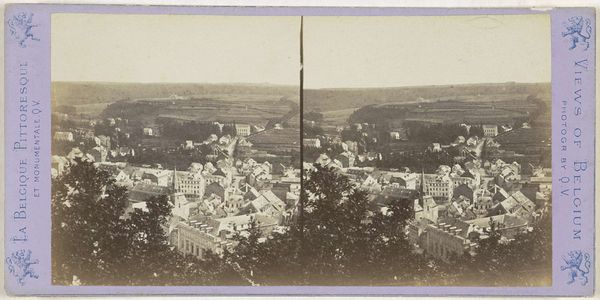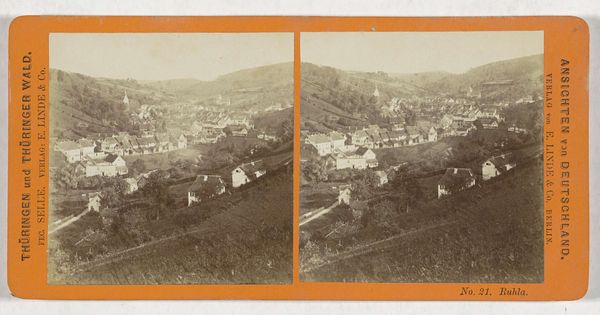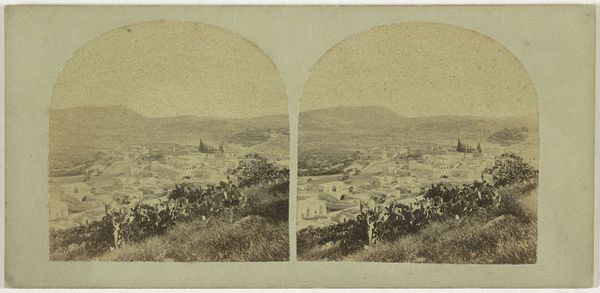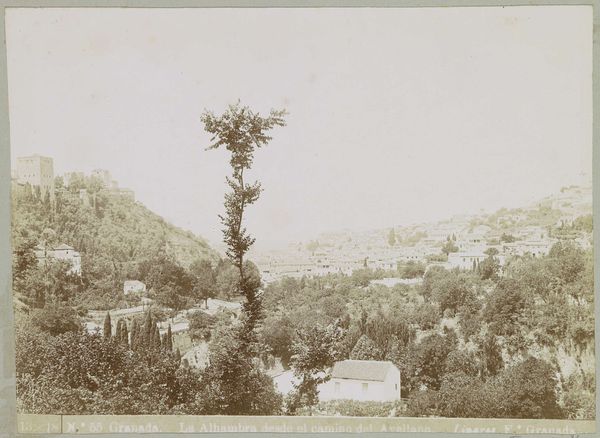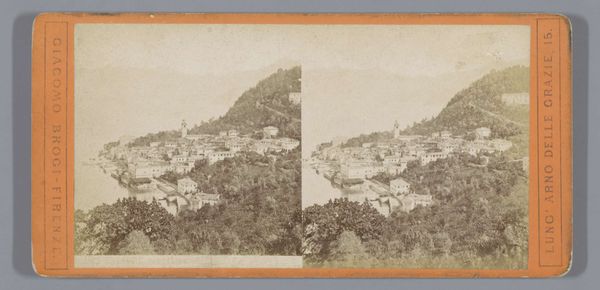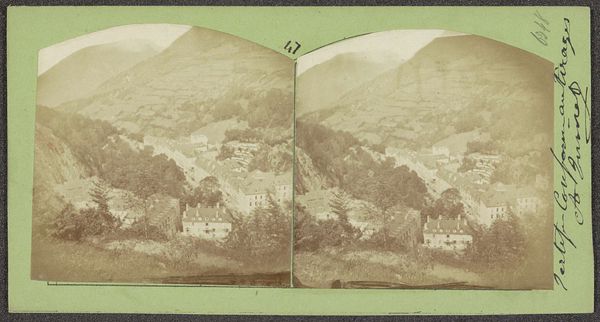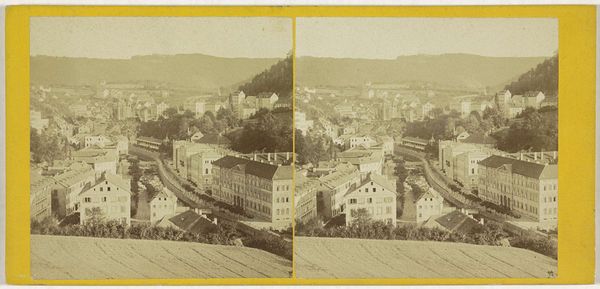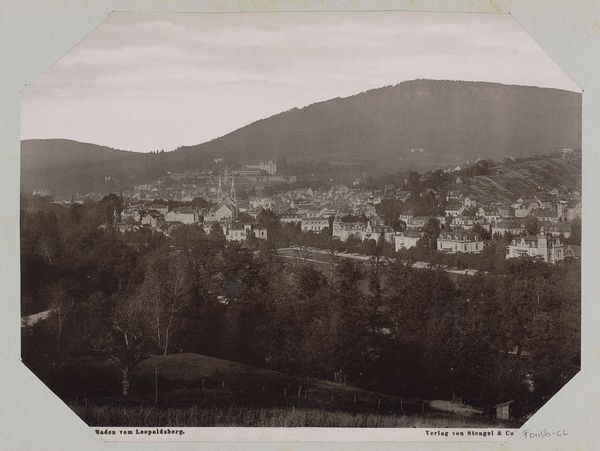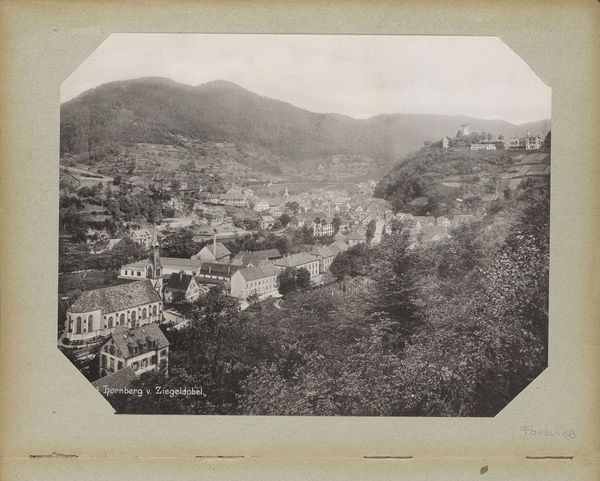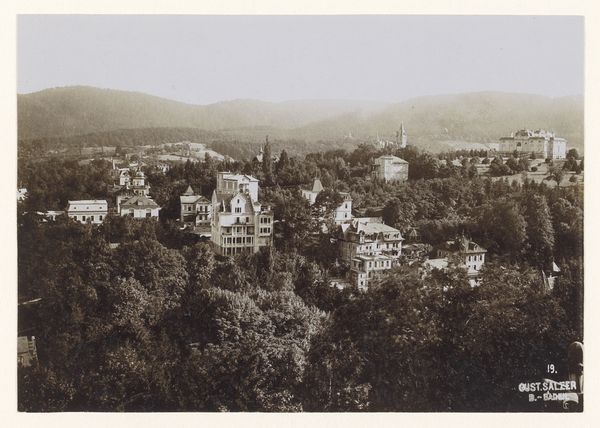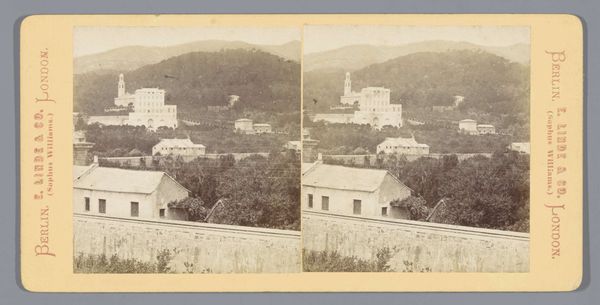
Dimensions: height 85 mm, width 175 mm
Copyright: Rijks Museum: Open Domain
Editor: Okay, so we're looking at "Gezicht op Spa," a C-print photograph taken between 1866 and 1870 by Jules Hippolyte Quéval. It feels like looking at a dream; the hazy distance softens the hard edges of the town. What do you make of its Romantic style in photography, a medium we tend to think of as documentary? Curator: A dream indeed! It's less about cold, hard fact and more about the mood Quéval evokes, isn't it? I almost feel like I could be looking at a painting – maybe a Corot cityscape, soft and shimmering. He wasn’t just recording Spa, but capturing its soul. The photograph makes the scene feel both real and… nostalgic, like remembering a lovely summer vacation. Why do you think Quéval opted for such a hazy effect? Editor: Maybe to emphasize the picturesque aspect? The Romantic movement did love its landscapes… and the best angle they could take in order to capture it from above to capture the scale of it? Curator: Exactly. Think about the other possibilities—sharp focus, stark lighting. That wouldn’t convey the feeling he was going for. He's carefully composing a vision of beauty and perhaps longing, tinged with a wistful appreciation of this specific, tangible place. Plus, Spa was a well-known resort town at the time – a destination for people seeking beauty and tranquility, so maybe that soft focus helped market it and perpetuate its legacy of a vacation wonderland? Editor: I didn’t think of it that way! I guess I was focusing on the *art*, not the advertisement! So, it's Romanticism meeting a kind of… early tourism campaign. I'll have to remember that. Curator: And it works both ways—a work of art, and a clever commercial. Now, what else can we unearth by pondering this photograph?
Comments
No comments
Be the first to comment and join the conversation on the ultimate creative platform.
